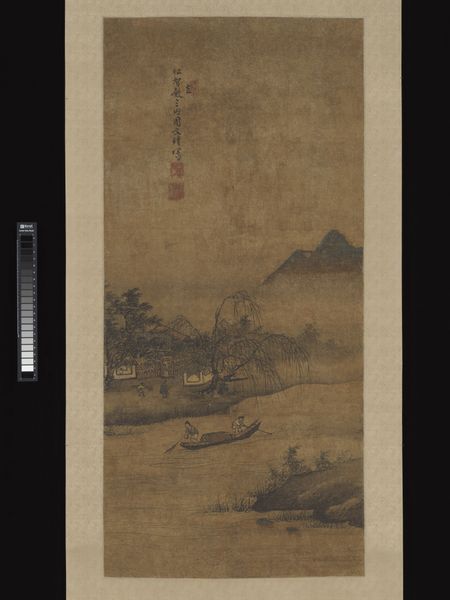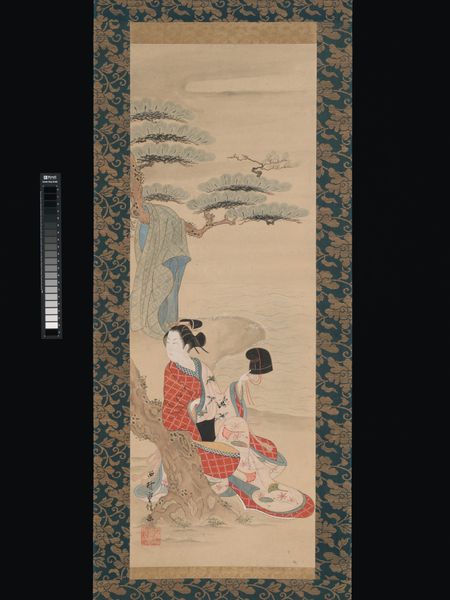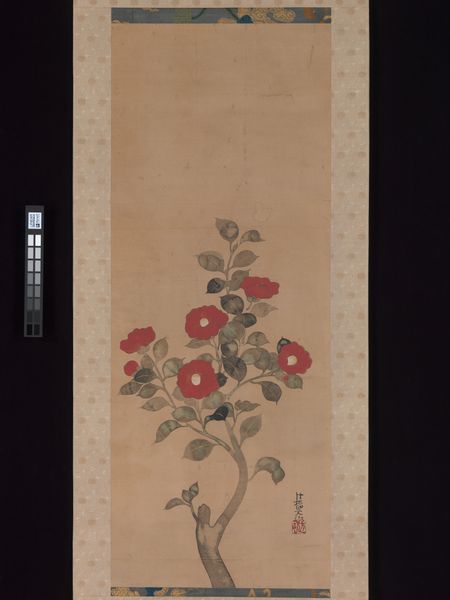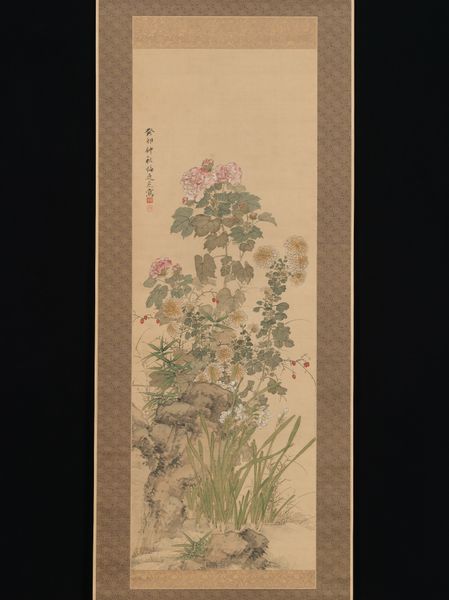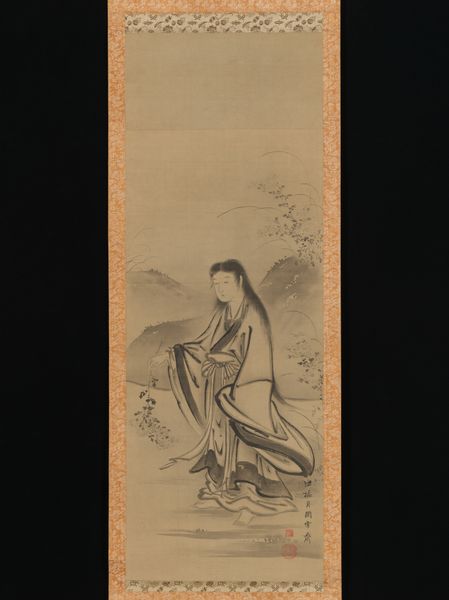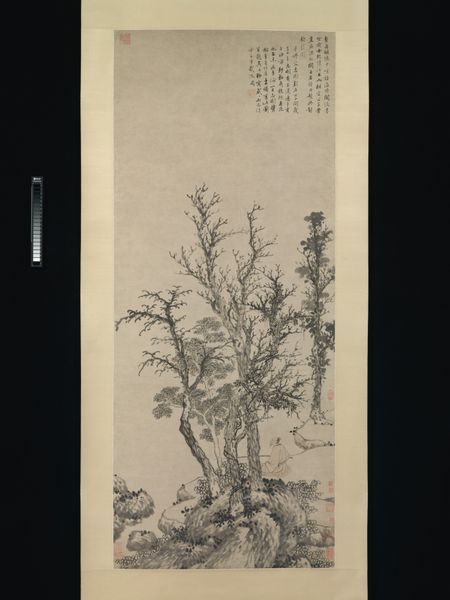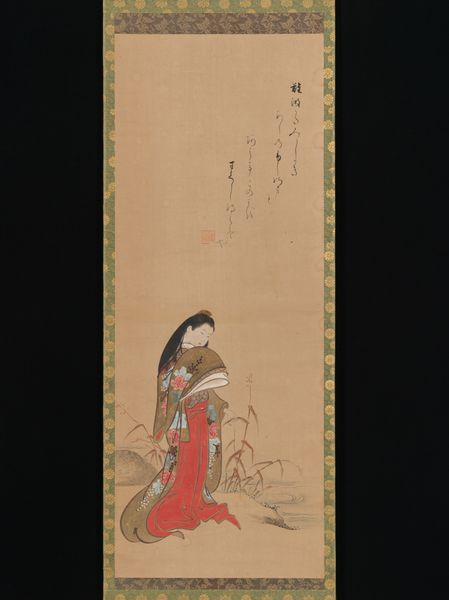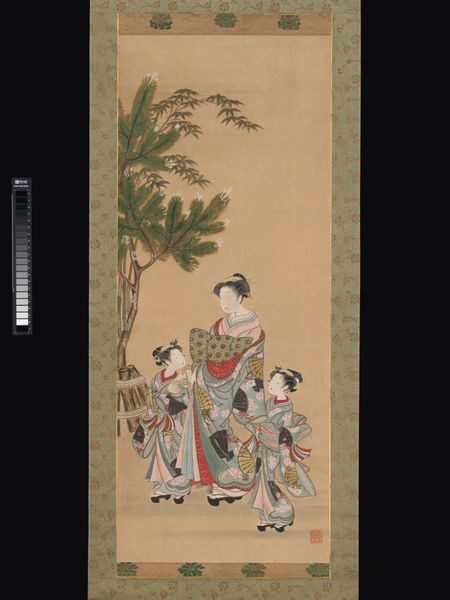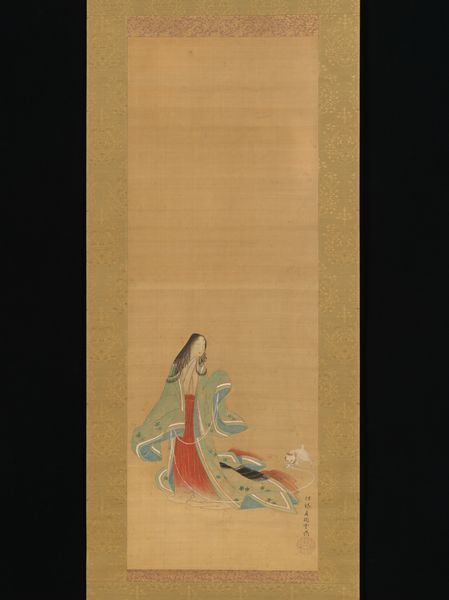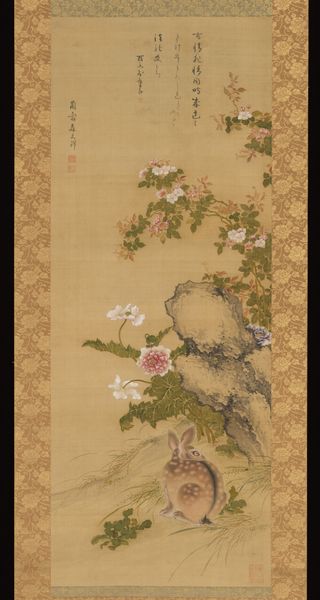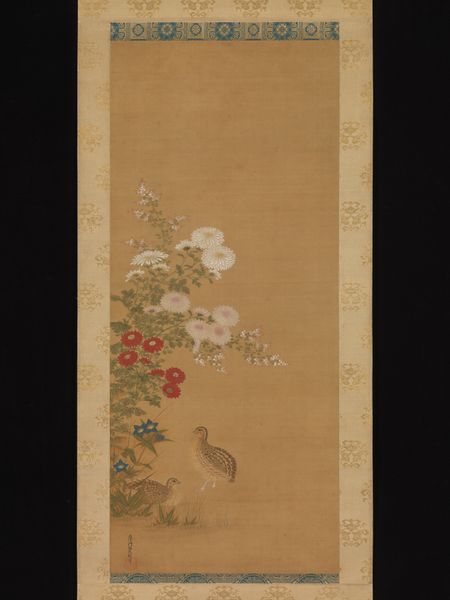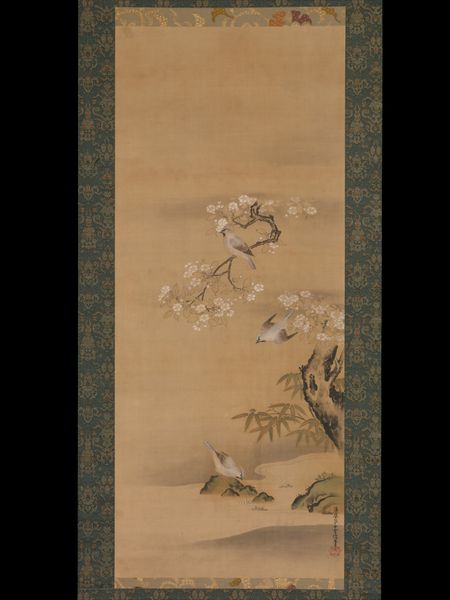
tempera, painting, paper, ink
#
tempera
#
painting
#
asian-art
#
landscape
#
figuration
#
paper
#
22_ming-dynasty-1368-1644
#
ink
#
earthy tone
#
orientalism
#
china
#
history-painting
#
calligraphy
Dimensions: Image: 49 × 17 1/2 in. (124.5 × 44.5 cm) Overall with mounting: 9 ft. 5 1/8 in. × 25 3/8 in. (287.3 × 64.5 cm) Overall with knobs: 9 ft. 5 1/8 in. × 29 1/2 in. (287.3 × 74.9 cm)
Copyright: Public Domain
Editor: Here we have Qiu Ying’s “Lady in a Bamboo Grove,” painted sometime between 1495 and 1552 using ink and tempera on paper. It feels very serene. How do you interpret this work, especially in its historical context? Curator: This painting invites us to consider the limited roles afforded to women during the Ming Dynasty. The bamboo grove, often a symbol of resilience and virtue, becomes an interesting backdrop. Do you see how the lady is positioned almost within and yet separate from the bamboo? Editor: I do, yes. She seems both a part of and apart from the natural world around her. Curator: Precisely! Consider how the male gaze historically defined female virtue. Was the artist commenting on the pressure women faced to embody these ideals of resilience while also being confined by societal expectations? The empty space around her adds to this feeling, doesn’t it? Editor: It really does. The lack of interaction with her surroundings almost isolates her. Was this a common theme in art featuring women at the time? Curator: In many ways, yes. Representations of women were often coded with symbolism reflecting moral or social narratives. What's subversive here, perhaps, is the subtle way Ying conveys the constraints without explicitly condemning them. Instead, we get a glimpse of quiet contemplation. Editor: So the painting isn’t just a beautiful scene but a commentary on the expectations placed on women of that era? Curator: Exactly. Art serves as a mirror reflecting the societal norms, prejudices, and occasionally, a silent rebellion against them. It challenges us to look beyond the aesthetic and to engage with the historical narrative. Editor: That's a fascinating perspective. I'll definitely look at art with more of a critical, historical lens going forward. Thanks! Curator: My pleasure! It is important that art fosters dialogue and reflects intersectional experiences of gender, identity, and the narratives that shape our society.
Comments
No comments
Be the first to comment and join the conversation on the ultimate creative platform.
